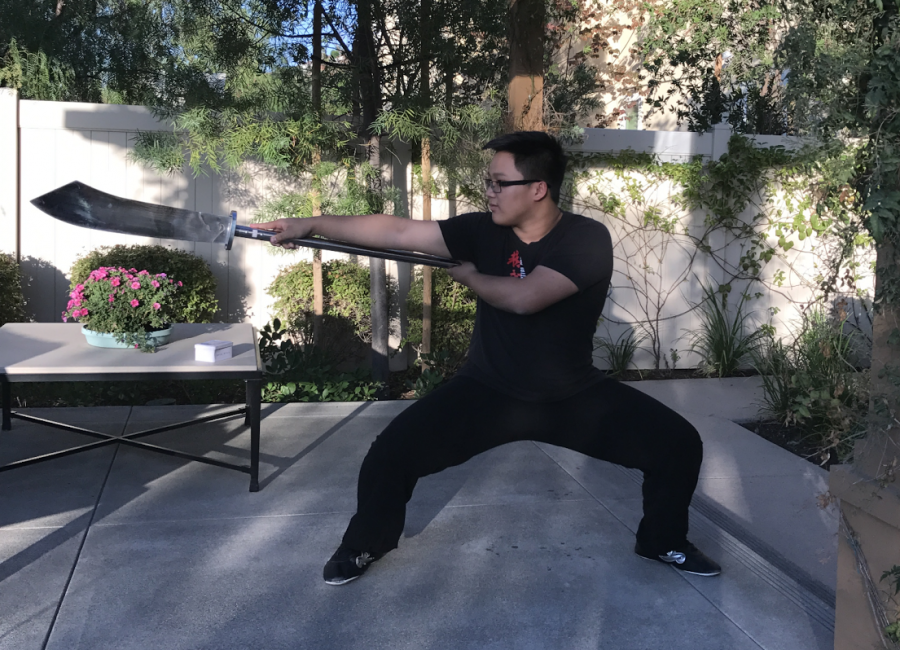Brahma finds passion in kung fu
Junior Sunny Yang has won multiple medals practicing Shaolin wushu.
Junior Sunny Yang has competed at multiple events, including the Los Angeles International Shaolin Wushu Tournament.
October 11, 2017
The sounds of yells, jumps, kicks and swinging swords radiate off the room’s walls. All around are trainees executing powerful movements with precision and force while wielding swords, staffs or just their fists.
Diamond Bar High School junior Sunny Yang is among those trainees practicing Shaolin wushu, the source from which “all martial arts under heaven originated from,” according to Chinese folklore.
Although he played basketball as a child, Yang was never fully invested in sports until he watched Shaolin wushu performances in China. Intrigued by the weapons used and acrobatics performed, Yang asked his parents to enroll him in lessons when he was ten.
“Learning different forms with weapons is really fun and Shaolin wushu is also a part of my Chinese culture,” Yang said.
There are two main forms of Shaolin wushu: northern and southern. The northern style focuses on grace and flexibility, while the southern consists of powerful movements. Both styles also utilize weapons with cultural meanings and backgrounds in some performances.
“Shaolin wushu is a combination of skill, grace and power, many of the jumps and movements require several months of training to perform,” Yang said.
Yang has practiced the southern form since he began and prefers to use hand form instead of performing with weapons. At 13, Yang began competing, and since then, has participated in four tournaments, earning a total of seven gold medals and two silver medals.
The biggest tournament Yang has competed in is the Los Angeles International Shaolin Wushu Tournament, in which he won several medals against contestants from around the world.
“I do my best at major events. I finally put to use all of the hard work I put into training and preparing,” Yang said.
These competitions usually last an entire day and consist of a variety of events featuring different skill levels and ages and the use of various weapons. Yang has earned most of his gold medals from hand form performances, while majority of his silver came from his broadsword form and staff form.
To prepare for these events, Yang trains two to three times every week for roughly one and a half hours each session. The training can be brutal and varies throughout the year. However, the training typically follows a pattern: warm up, practicing jumps and finally practicing and correcting form.
During the school year, Yang does not have as much time to practice and usually engages in a longer session during the weekends. In the summer, however, he follows a routine of three sessions per week of strict training. The training grows especially challenging before a major tournament or performance, since perfecting the tiniest details in form becomes critical to success.
“The training is exhausting,” Yang said. “You have to correct every minute mistake in your form and sometimes that involves redoing the same movement over and over and over for as long as it takes.”
After high school, Yang hopes to continue practicing Shaolin wushu. If he makes the competitive Shaolin wushu teams of schools such as UC Berkeley, he will definitely continue to dedicate his time to the art. However, if not, he will prioritize his studies and may teach Shaolin wushu as a side job, hoping to pass on the art to future generations.









